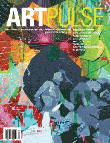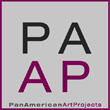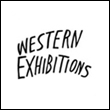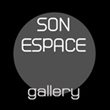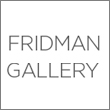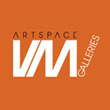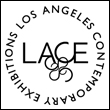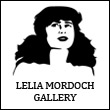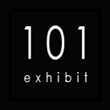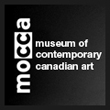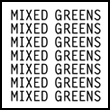« Reviews
Tom Molloy: New Worlds
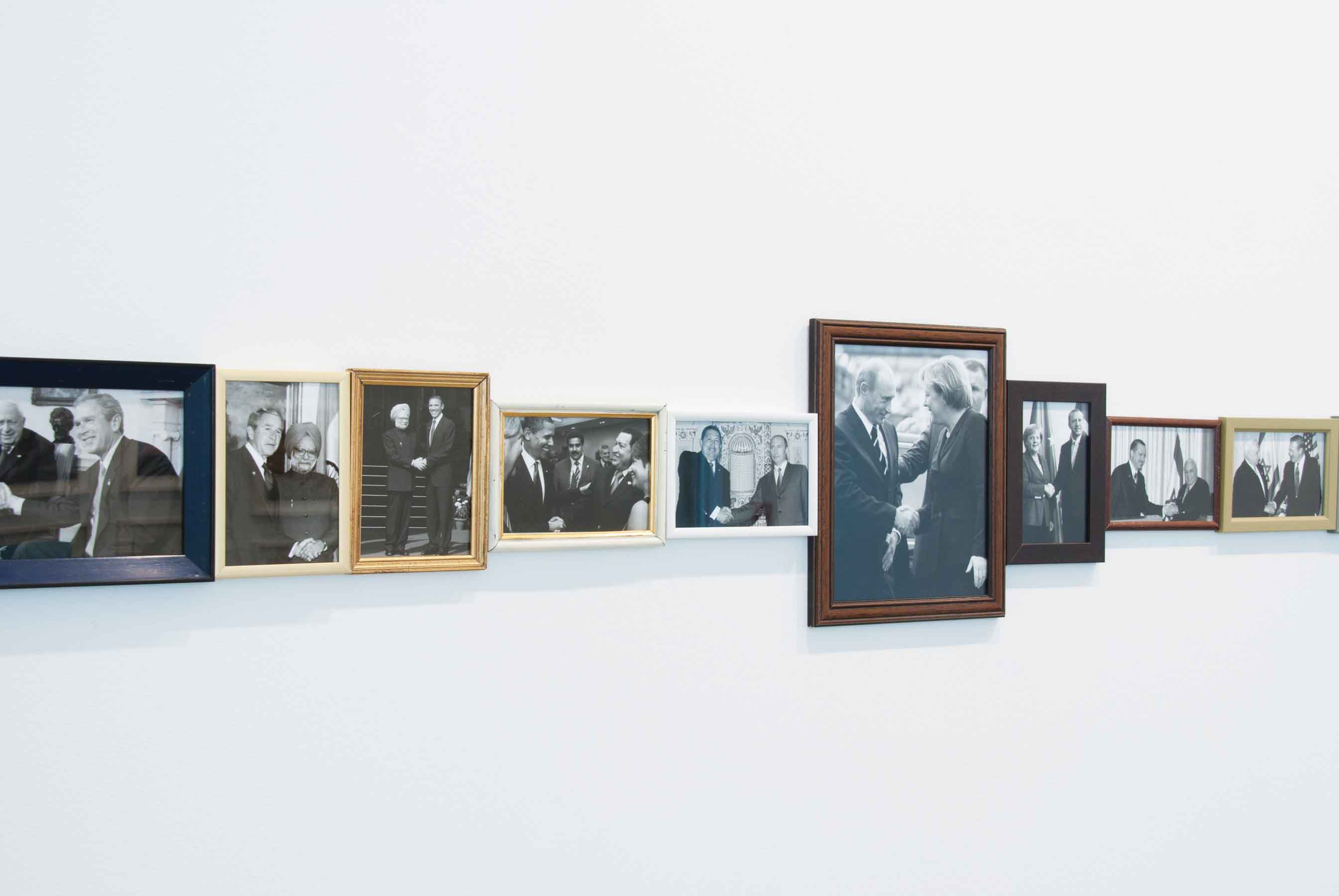
Tom Molloy, Shake (detail), 2011, set of 59 framed, found photographs, dimensions variable. Courtesy of the artist and Lora Reynolds Gallery.
Lora Reynolds Gallery - Austin
By Garland Fielder
Tom Molloy’s “New World” at Lora Reynolds Gallery in Austin, Texas, is a powerful statement achieved with grace. The mixed-media ensemble speaks volumes about heady topics such as race and politics but not to the detriment of the art. There is a clarity and uniqueness of vision in Molloy’s work that enriches the content.
Molloy’s strategy suggests a potent agenda while speaking softly. Irreverence is in play, but not in a way that derides or succumbs to an expression of angst or sarcasm. The strength of the show lies in the artist’s ability to comment while avoiding punditry. This is as refreshing as it is hard to do.
In Dream, Molloy presents paperback versions of President Obama’s two autobiographies. The artist has cut away the skin of the author who is depicted in full on each cover, leaving the white pulp of the inner cover in place of skin. The incision is done with dexterity-it’s almost hard to appreciate the simplicity of the task if one is not paying close attention. The leader of the free world is laid bare, skinless as it were, beyond the implications of ethnicity. And yet, the implications are abundant… There is no core without a husk, and by slicing away the obvious layer of the President’s “presence,” Molloy suggests that the man is what is projected on to him. It is an obvious sentiment presented in an obvious way, but still, the overall effect is one that speaks to more than just the obvious. The artist’s hand is so skilled and deft as to allow a presence of sentiment where, more commonly, a simple juxtaposition would have sufficed.
In Shake, Molloy presents a lineage of the leaders of the world in black-and-white photographs shaking hands, each in a small-framed vignette. The pictures are mounted just below eye level, in full circle around a free-floating wall in the gallery space. They make a ring of hands linking the cast-away promise of sincerity present at such moments. The manipulation of the images is low-key, done with little fuss, and yet the idea seems one of profound significance. It is as though the artist is taking to task an assumption we long ago cast aside.
Protest presents an expanse of tiny black-and-white photographs of protestors of the past 30 years or so, stenciled out and propped upright, all amassed in a thick procession mounted on a wall-long shelf. The images are dissected so that the backgrounds are flat on the shelf while the protesters themselves are normal on the surface. There are many of them, and they are amassed in such a way as to constitute a steady flow of civic duty. The work is both humorous and heartfelt. There is no obvious agenda, since the collection includes any and all forms of protest captured by pop culture since the early 1960s, but the overall sentiment of unrest resonates. And it is this ambiguity of agenda that is at once the point of the work and the saving grace.
Molloy creates works that speak about real and pervasive issues in our culture, but in ways that are approachable and witty. In other hands, the content would surely be more derisive and less appealing. His talent lies within his ability to quickly conjure up projections of our own assumptions while avoiding finger pointing.
(February 11 - April 14, 2012)
Garland Fielder is an artist and writer based in Austin.
Filed Under: Reviews

